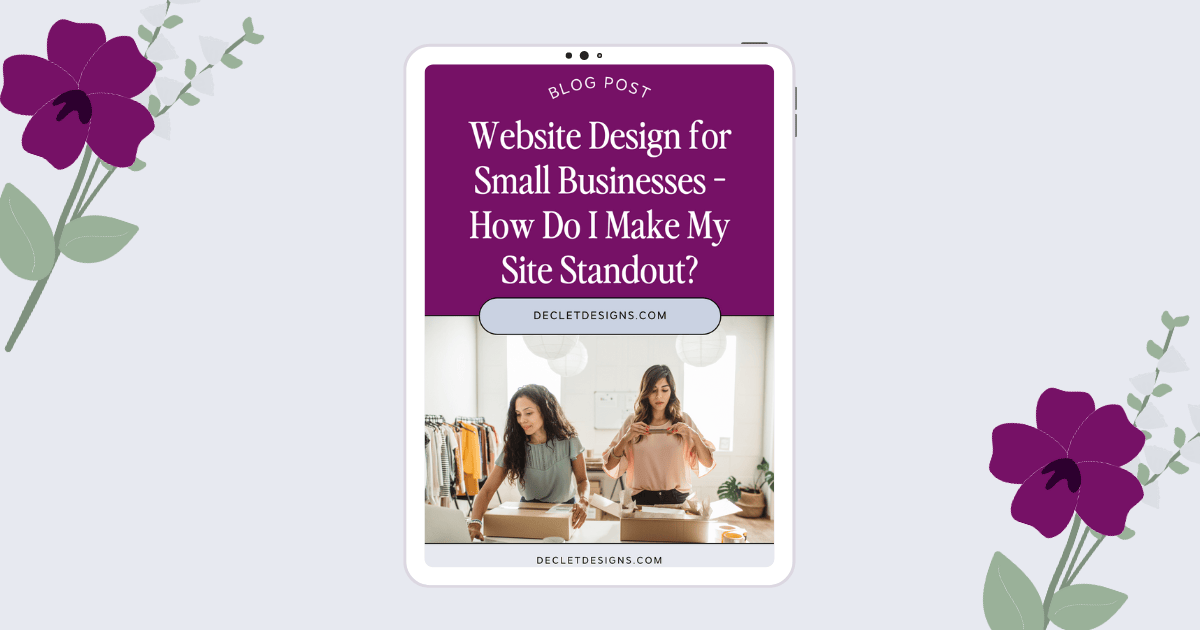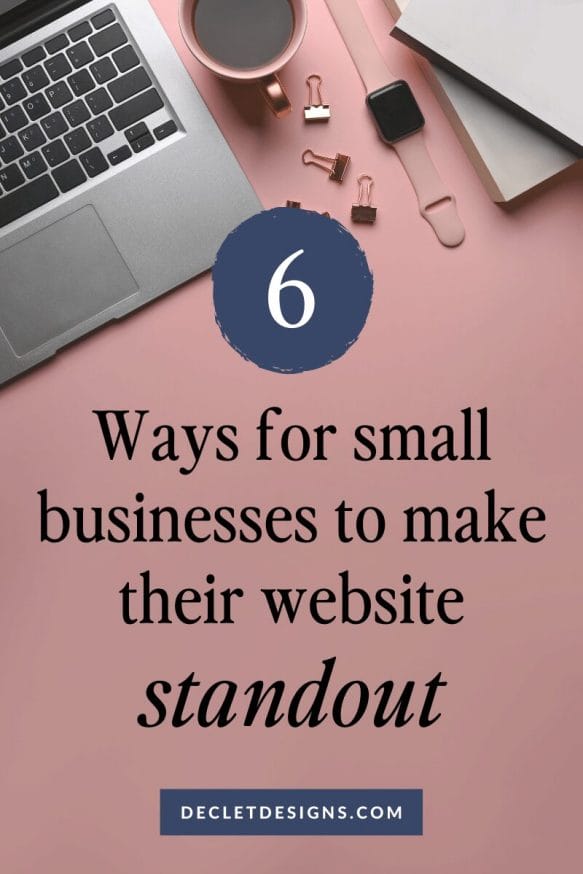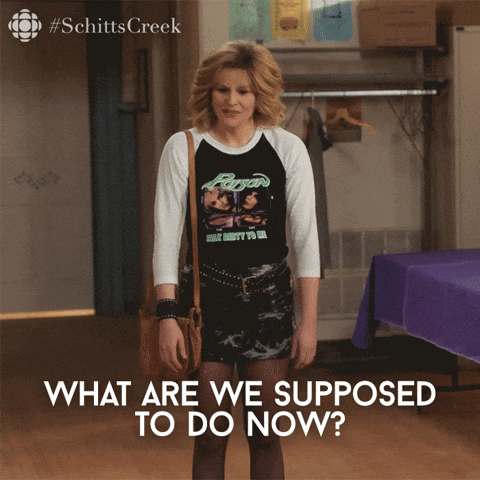

Small businesses often have to work twice as hard to get half the recognition. And when it comes to website design for small businesses, that rings true tenfold. You need a site that not only looks great but also accurately represents your business and what you have to offer potential customers.
So, the question is, how do you make your website stand out in a sea of sameness?!
Start by thinking outside the box and incorporating some of these creative tips into your design:

Start by looking at other websites from others that are in your field. What common themes are you seeing? Take note of what you like, what you don’t like, and what you want to do differently in order to stand out.
Are you noticing that they are all pastel colors? Would it be in alignment with your brand and brand personality to do something darker or bolder?
Are all the other sites showing the same type of stock photos? Then you should focus on spending money on GOOD quality stock photos OR better yet, have a brand photoshoot! (more on that later!).
I think a lot of the time, we tend to want to do what is ‘safe’ when it comes to our design or presentation to the world. BUT, it’s also good to infuse something into your site and brand that is UNIQUE to you and your private practice or business.
Don’t feel pressured to do something just because it’s ‘trendy’ or because you feel like you should. For example, script fonts are a love/hate item for most people. So stick to your gut feeling about whether or not you want them incorporated into your website design (but make sure they are somewhat easy to read and not overly used!).
Now, back to the issue of photos. The first choice should always be to try to have your own brand photos to use. These don’t have to be ‘perfect.’ BUT, they do need to be clear and have good lighting. Think about how these photos will be used.
Do they need copy space?
Is there anything in the background of the photo that you don’t want to be there? (Look, it’s happened! A trashcan or dog bed, etc. that was there and no one saw it, etc.)
Did you take photos in both landscape and portrait?
And to my dietitian and nutritionist friends, for the love, please don’t use just stock photos of food! Use photos that help your client connect with you through the photos of you and choose photos that they can see themselves in.
For my weight-inclusive businesses, make sure you are not only finding photos that align with your brand and style, BUT that show all shapes and sizes! Do not put just straight-size people on your site and then claim to be weight-inclusive, friend.
Think about the times you have visited a website only to be completely overwhelmed by all of the choices, popups, menu options, etc.? And what did you do? I’m willing to bet that you exited that website in a hurry.
No one likes to feel overwhelmed! So think about that when a potential client is visiting your site. When they first visit, what do they see? What happens? What do you want them to actually do?
We have a tendency to want to show them everything ALL AT ONCE.

For example, on the homepage, you don’t want to have your services, schedule a call, sign up for my newsletter, grab this freebie, read this blog post and follow me on Instagram all at the same time!
It’s just too much.
So, be more thoughtful about how you can set up the strategy around your site and limit the calls to action to only 2-3 per page.
Another thing to remember is that not everyone is entering through your homepage. Most of the time, we tend to think that potential clients are coming through the front door of our website aka the homepage. And that they then go to our about page, then services, then schedule a call. But, that is actually not really the case most of the time.
If you post a new blog post, maybe that’s the first place they see. Then they are curious about who you are, so they go to your about page. Then on your about page, you ask them to sign up for your freebie so they are now on your email list. Your email list then continues to nurture this relationship, so they eventually come back to your services page and then contact you.
Notice how in that scenario, they never even saw your homepage!
This is why it’s so important to think about the purpose and strategy of your website and how it is intertwined with your other methods of communication with your ideal clients.
Look, for most of us, we know this part isn’t fun. My recommendation for writing blog posts is to work smarter, not harder. Don’t spend your time writing a bunch of posts and editing them just because you ‘think’ this is something your ideal client wants to read about. Do your keyword research first!
Here are some sites that can help you get started:
For my dietitian and nutritionist friends, I definitely recommend Erica Julson’s course on SEO and blogging: SEO made Simple (affiliate link). I talk about her course and other software tools in this post.
I think we are all aware of using social media to promote our business and website. Unfortunately, it’s a necessary part of most businesses these days.
For example, I love working with weight-inclusive professionals in private practice and I’ve found that a lot of them are on Instagram, so I spend a lot of time there. But, for my nutrition private practice, I’ve noticed that my clients are actually on Facebook more, so I post some there as well. It really just depends on where your ideal client is and what you prefer.
Also, I would definitely recommend getting into using some form of video on your social media (and your website). It just really helps accelerate the know, like, trust factor when people can see your face and mannerisms, etc.
For directories, first, start local. Google search and ask around to see what local directories are being implemented and request to be added. For dietitians, make sure you are added to directories that are specific to your niche. For example, if you are intuitive eating based, you can be added to the Intuitive Eating Certified Counselor directory. Other examples are the EDRDPro directory and of course the Academy of Nutrition and Dietetics.
Just be careful with paying to be in any directories. Other than Health Profs, there really aren’t many that I would recommend are worth the money (depending on your location and ideal client, of course).
And the most important one of all, ask for feedback!
The other piece of this step is that sometimes we think well, my website is built and done and now I never have to touch it again. Sorry, but a website is a continuous project in order for it to be effective. You need to ensure that it’s not only functioning properly but that you are keeping the content up to date so that it can improve your SEO and people can actually find your website! A website isn’t much good if no one can find it 😉.
Of course, this is just a basic overview, and there are many other factors that come into play when designing an effective online presence. If you’re feeling overwhelmed and need some help getting started, don’t hesitate to reach out. I’d be happy to chat with you about your branding and website design needs, and see how I can help you create a site that represents your unique business perfectly.
Psssst, did you know that Declet Designs has been selected among the Top Web Designers In Georgia by Designrush?!

I'm a Dietitian turned Designer who loves helping weight-inclusive private practices get more clients with designs that stay true to their values & mission.
Declet Designs offers website design, branding, and SEO for weight-inclusive small businesses. Located in Athens, GA, and serves small businesses and private practices nationally.
Declet Designs is a welcoming and inclusive space for all people regardless of their race, ethnicity, age, disability, sexual orientation, gender identity or expression, neurodivergence, or national origin.
Declet Designs is located on the lands of the Muscogee and Tsalaguwetiyi people and wishes to acknowledge them as the Traditional Custodians of this land. We also pay our respects to their Elders, past, present & emerging.
COPYRIGHT 2024 DECLET DESIGNS LLC